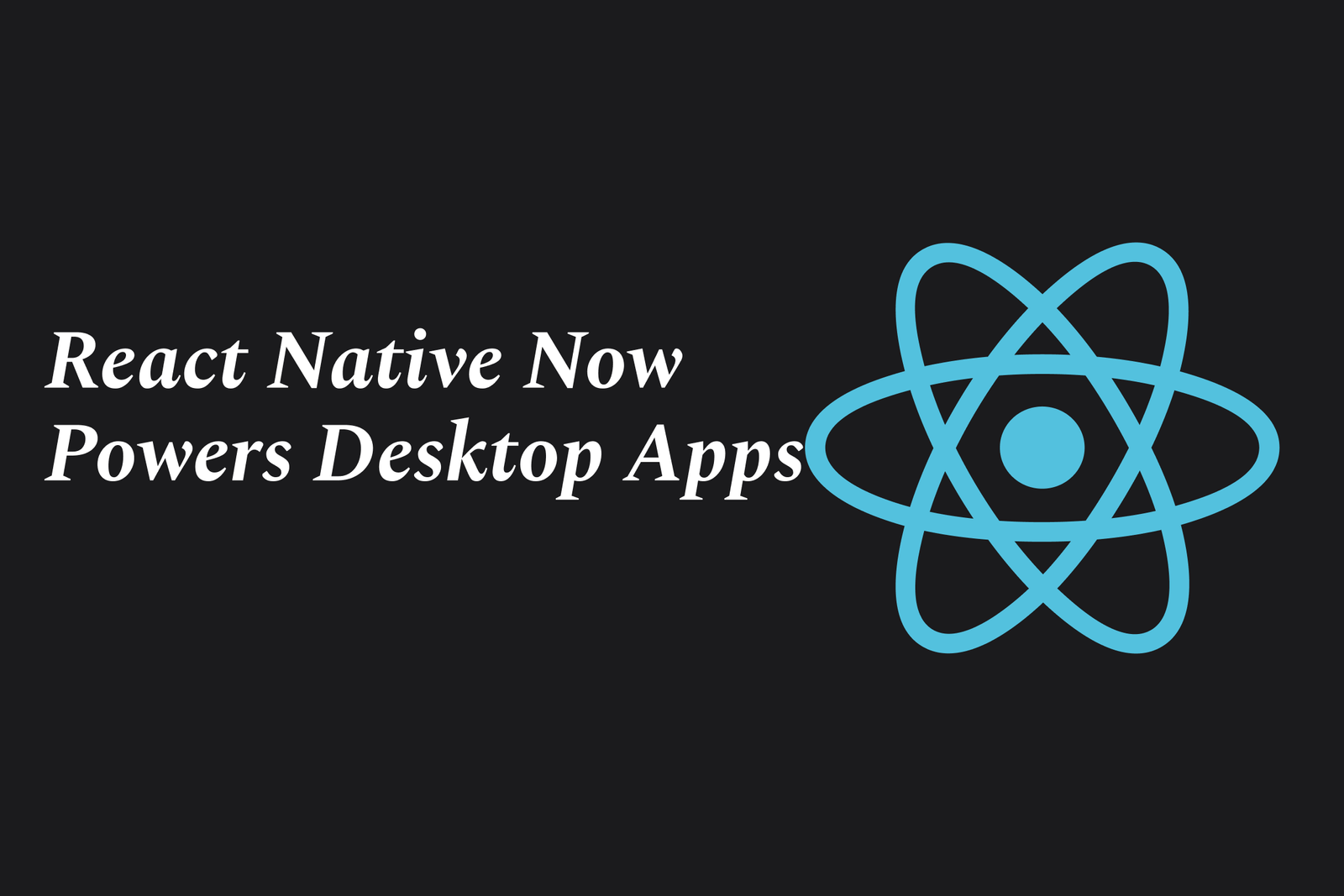React Native Now Powers Desktop Apps
React Native now powers desktop apps on Windows and macOS, enabling developers to build high-performance, native-feeling applications using JavaScript/TypeScript. It combines code sharing across platforms with native UI and APIs for seamless desktop experiences.
React Native Now Powers Desktop Apps
1 ) Introduction to React Native for Desktop
React Native, originally known for building mobile apps on iOS and Android, now supports desktop application development.
React Native for Desktop includes support for Windows and macOS platforms, enabling developers to build native desktop apps using JavaScript or TypeScript.
It leverages native controls, animations, and platform APIs to deliver high performance applications that blend seamlessly with the native environment.
2 ) Benefits of Using React Native on Desktop
Cross Platform Code Sharing: Allows substantial sharing of code between mobile, web, and desktop apps, increasing development efficiency.
Developer Productivity: Features like fast refresh speed up inner development loops.
Performance & Native Feel: Delivers app fundamentals—performance, accessibility, internationalization—on par with fully native Universal Windows Platform (UWP) apps.
Extensive Library Support: Leverages both JavaScript only libraries (npm) and native modules, with the ability to write custom native modules when needed.
Integration with Windows Ecosystem: React Native desktop apps can access any platform API and use native UI controls consistent with Fluent Design for Windows.
3 ) Use Cases and Adoption
Major companies including Microsoft, Facebook (Meta), Amazon, Shopify, and Wix use React Native to build powerful desktop apps in addition to mobile.
React Native apps power products such as Facebook Messenger Desktop, Microsoft Teams, Xbox Game Pass, and many enterprise applications.
This widespread adoption demonstrates React Native's maturity and suitability for production grade desktop software.
4 ) Comparison to Other Desktop Frameworks
Unlike Electron apps, React Native desktop apps tend to be smaller and more resource efficient because they rely on native UI components rather than bundling an entire browser engine like Chromium.
This results in faster startup times, lower memory usage, and better integration with native OS features.
React Native complements the Windows App SDK and WinUI, offering developers modern UI tooling with extensive platform reach.
5 ) Developer Experience and Challenges
Most application code remains in JavaScript or TypeScript, but developers should be prepared to write some native code to interface with platform specific features or optimize performance.
The ecosystem includes community modules, but contributions and native module development might be necessary to cover all use cases.
React Native’s active development and community support are expanding to improve desktop support features continuously.
6 ) Getting Started
Developers new to desktop development on Windows are encouraged to explore the Windows App SDK and WinUI for rich UI capabilities.
React Native for Desktop is ideal for those wanting to maximize code reuse, prefer JavaScript/TypeScript, and need native desktop app performance.
Resources and guides are available to assist developers in building React Native apps across Windows 10, Windows 11, and macOS platforms.
Summary:
React Native has evolved beyond mobile to empower developers to build performant, native feeling desktop apps for Windows and macOS using a shared JavaScript/TypeScript codebase. With major industry adoption and active development, React Native for Desktop offers an efficient alternative to traditional native or Electron apps, combining speed, native integration, and developer productivity.
https://justacademy.in/news-detail/android-system-diagnostics-tools
https://justacademy.in/news-detail/real-time-debugging-tools-for-flutter
https://justacademy.in/news-detail/the-future-of-react-native:-trends-every-dev-should-watch
https://justacademy.in/news-detail/flutter-vs-ionic-2025-performance
https://justacademy.in/news-detail/why-flutter-developers-are-in-high-demand-in-india
Related Posts
Java supports GDPR and data privacy by enabling secure data handling through encryption, controlled access, and precise data management. It allows developers to minimize PII exposure, ensure data confidentiality, and design workflows that comply with data protection regulations effectively.
Java code quality tools have evolved to include advanced static analysis, integrated security checks, and AI-powered code reviews. These updates help developers detect bugs, enforce coding standards, and enhance security, streamlining the development process and improving overall code reliability.
Java remains a cornerstone in big tech companies, evolving with modern features like records, pattern matching, and virtual threads. Its robust ecosystem, enhanced performance, and growing AI integrations keep it vital for both legacy systems and innovative new projects.
Java and CI/CD pipeline optimizations streamline Java application development by automating builds, tests, and deployments. They improve efficiency through parallelization, caching, and secure secrets management, enabling faster feedback loops and more reliable, scalable software delivery.
Java supports modern cryptography standards through its flexible Java Cryptography Architecture (JCA), enabling integration of advanced algorithms like AES, EdDSA, and post-quantum tools. Libraries like Bouncy Castle offer FIPS-certified, hardware-accelerated implementations for secure development.
Java 23 enhances record patterns by enabling concise, direct destructuring of record components within pattern matching, simplifying type checks and data extraction. This improvement boosts code readability and expressiveness by reducing boilerplate in handling immutable data classes.
Java remains a top choice for mobile app backends, powering scalable, secure, and high-performance server-side solutions. Latest trends include cloud-native microservices, reactive programming, and enhanced JVM optimizations, enabling efficient, flexible, and robust mobile backend development.
Java SE 24 and LTS Java SE 21 offer enhanced features and performance, while Apache Spark 4.0.0 introduces Scala 2.13 support and advanced ML and SQL capabilities. Together, they empower developers to build scalable, high-performance data applications with modern tools.
JUnit 5 modernizes Java testing with a modular architecture, improved assertions, and seamless Java 8+ support. Beyond JUnit, tools like Mockito and AssertJ enhance mocking and assertions, creating a powerful, flexible ecosystem for writing clean, efficient Java unit tests.
Java plays a pivotal role in cloud automation tools by providing a robust, platform-independent language used to build scalable automation frameworks like Jenkins and Selenium, enabling efficient CI/CD pipelines, testing, and orchestration across diverse cloud environments.










